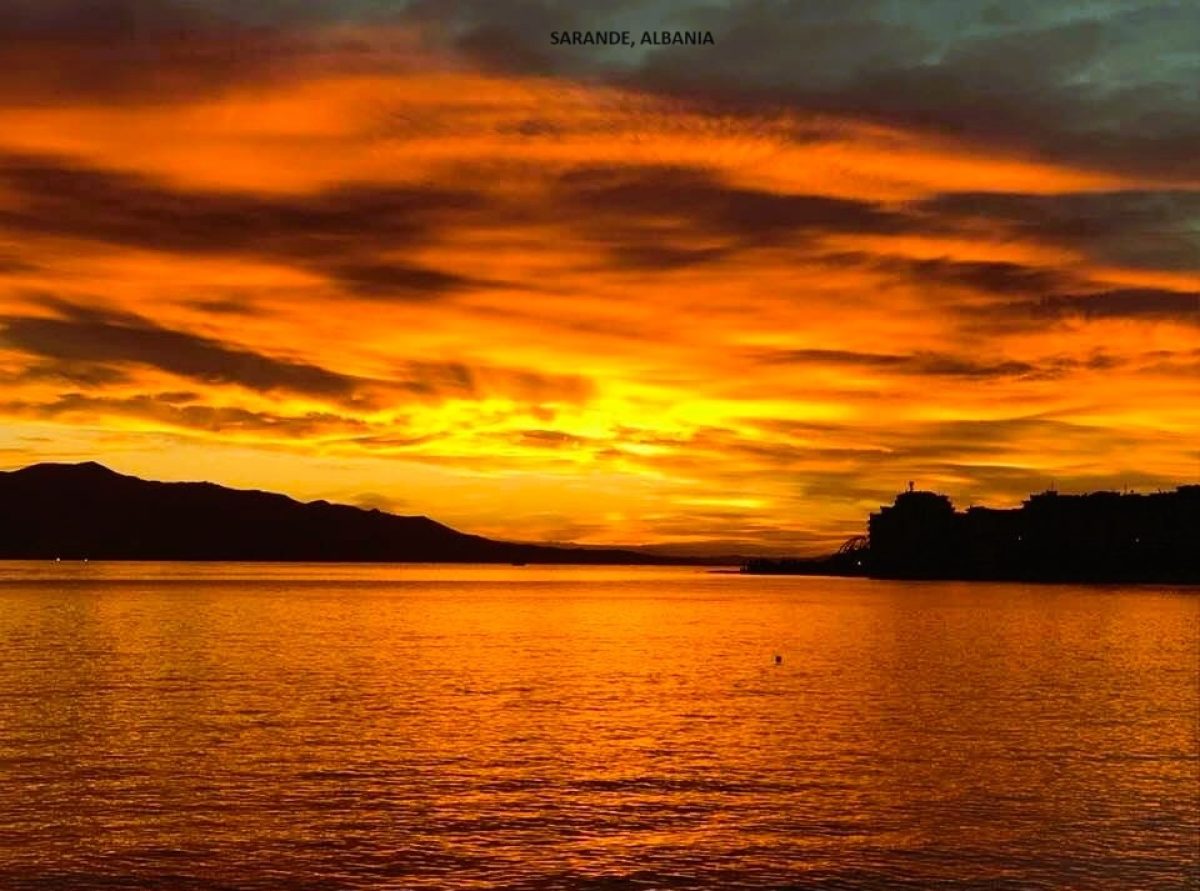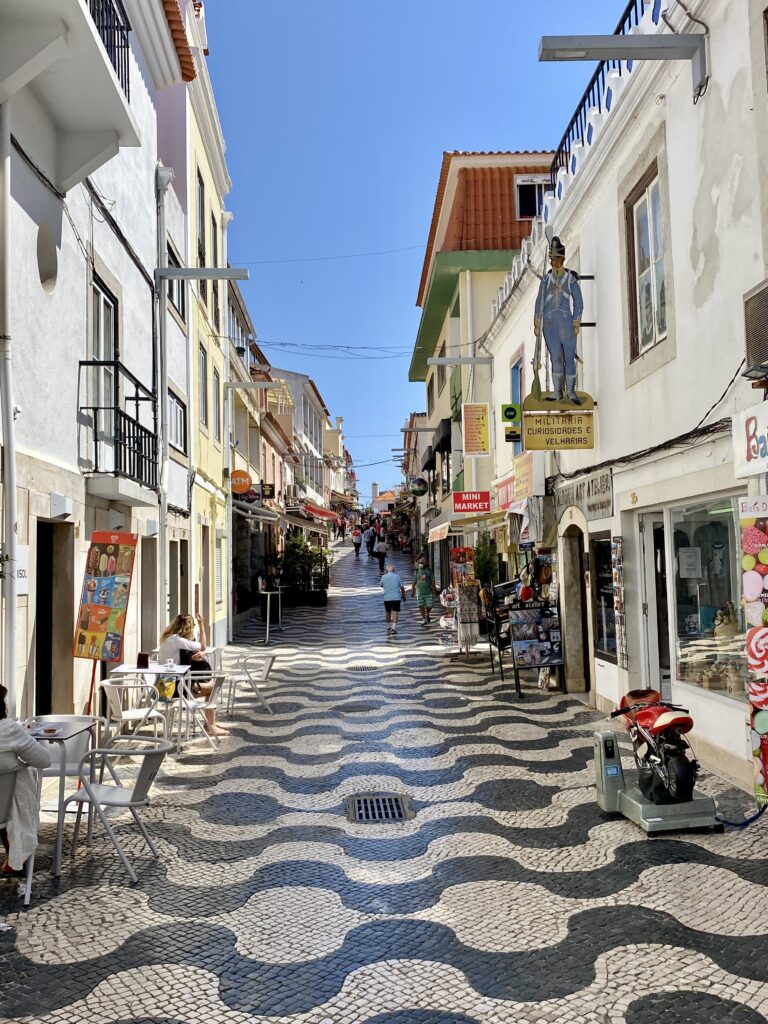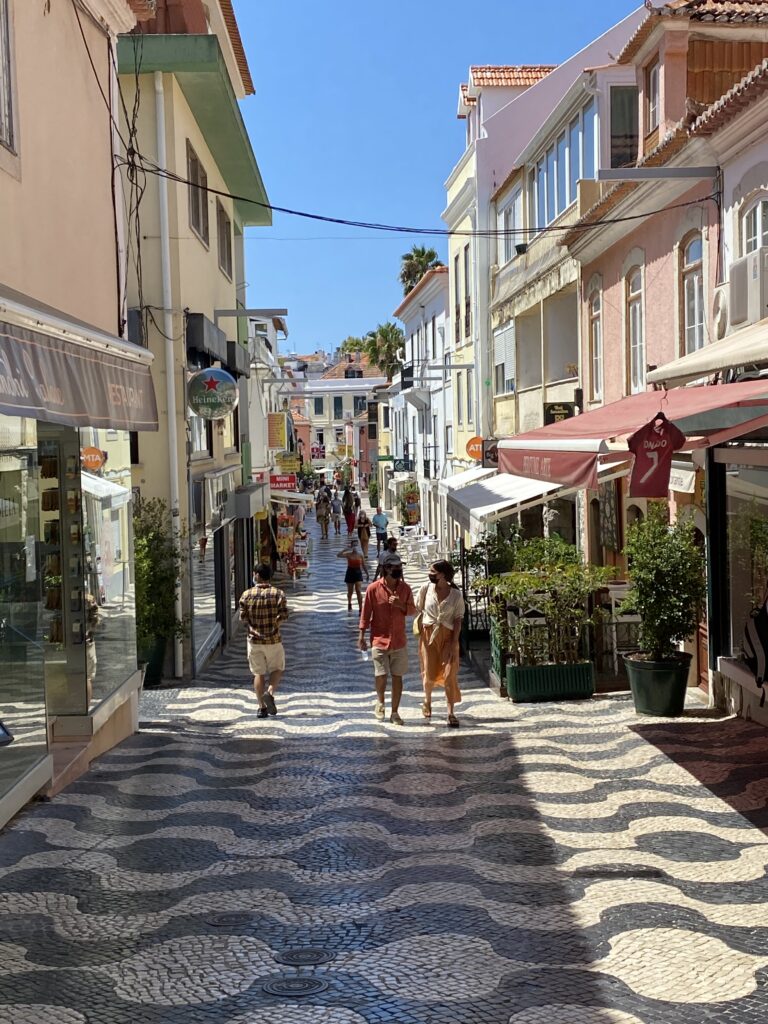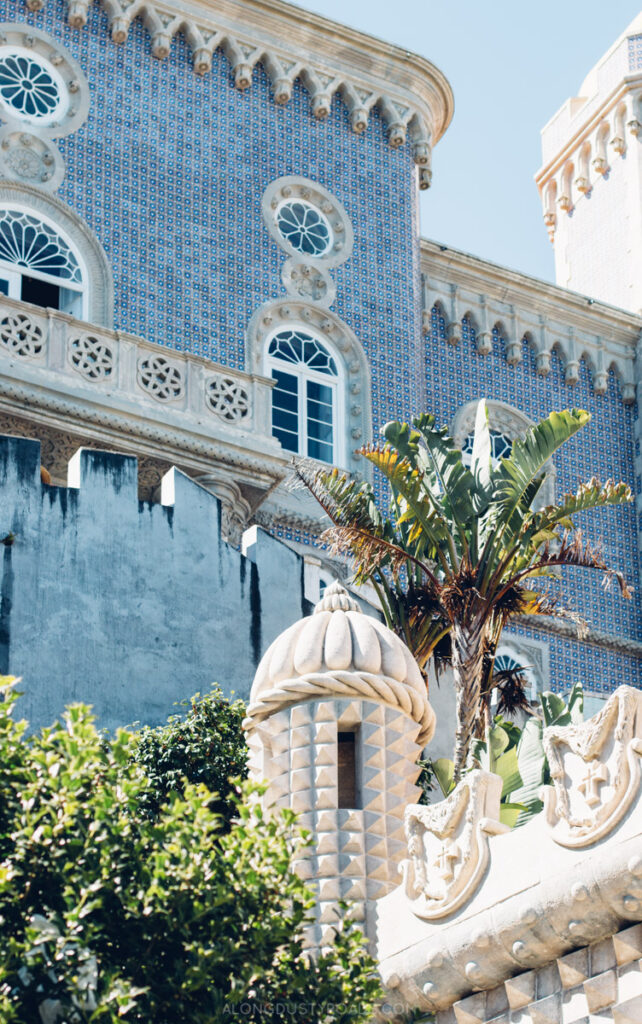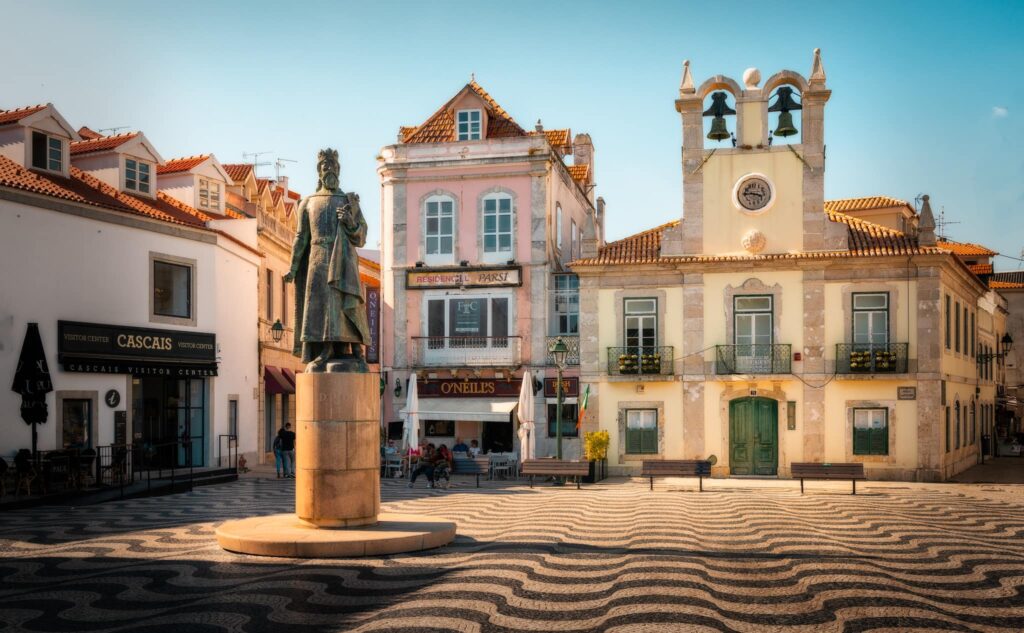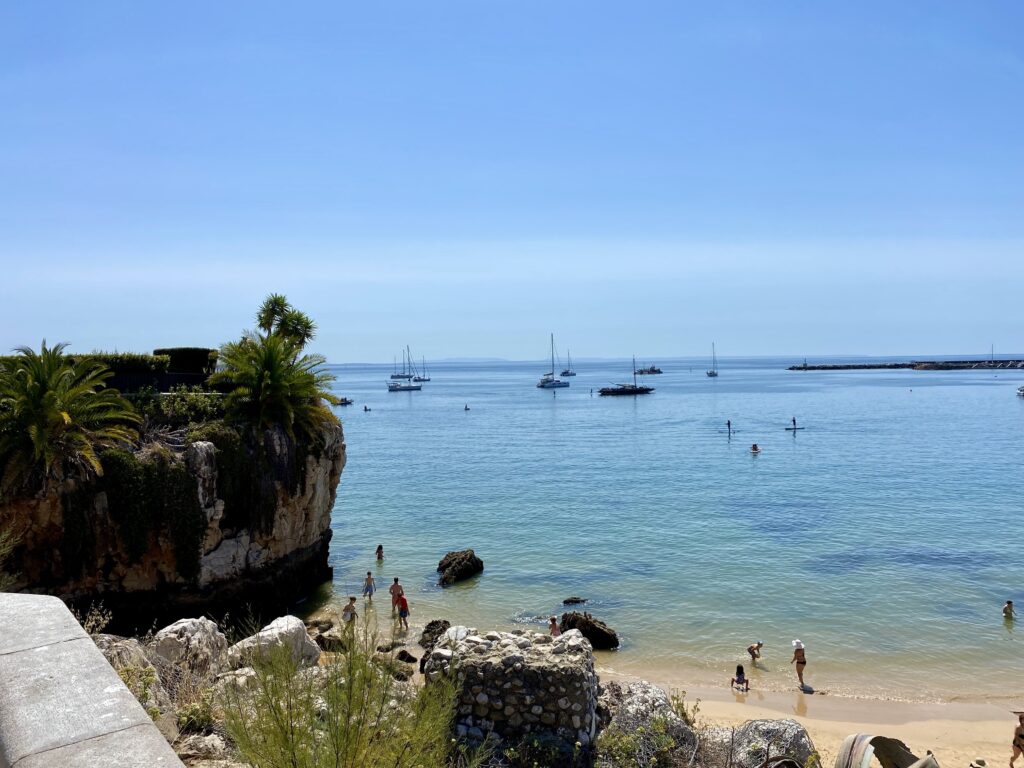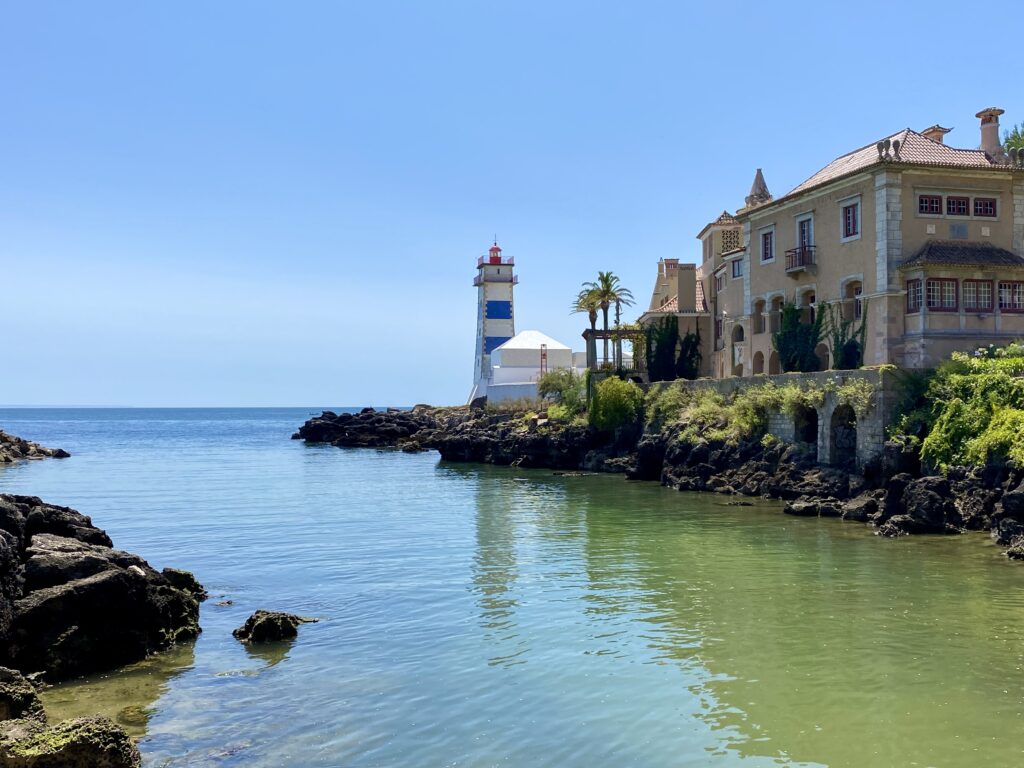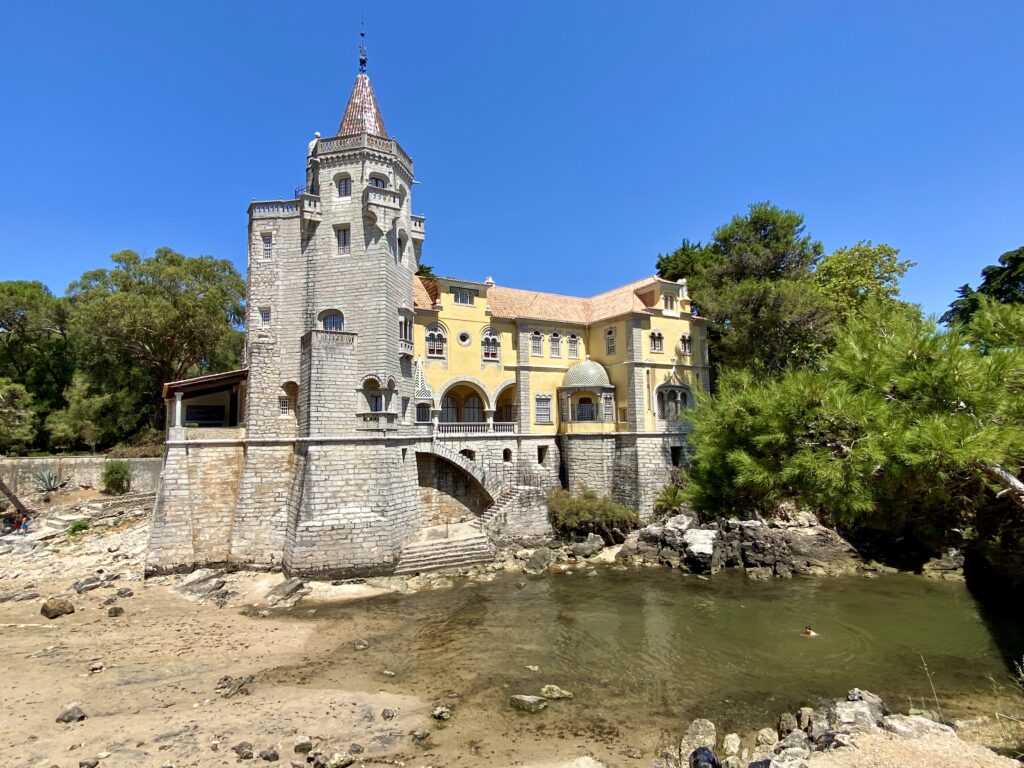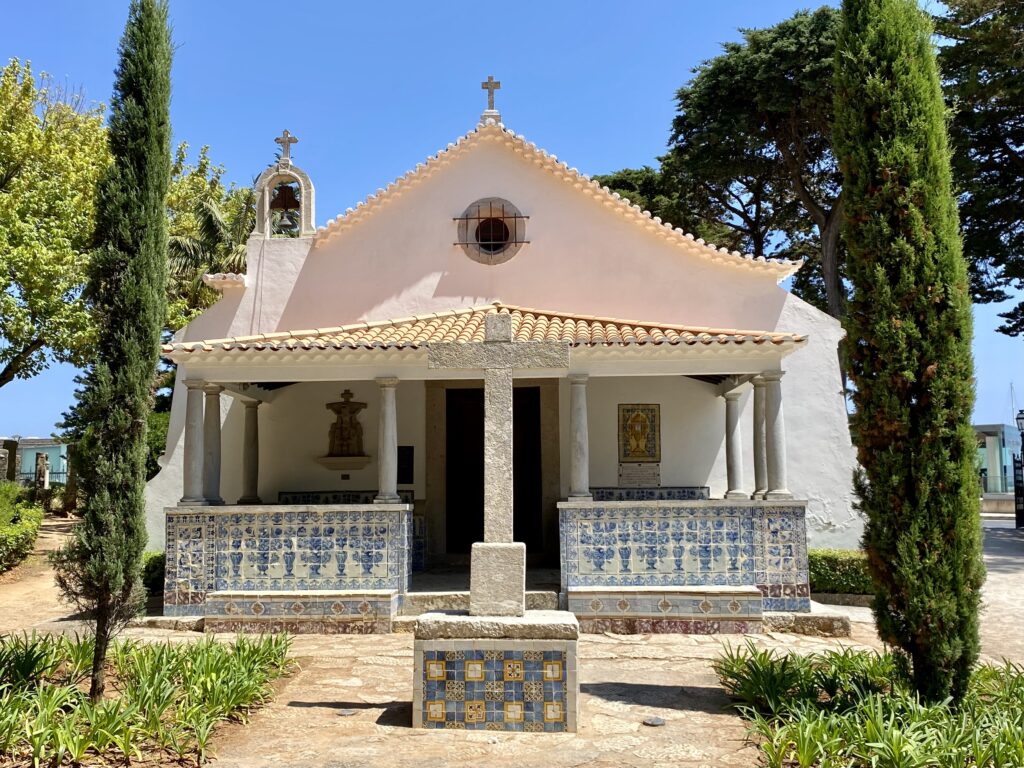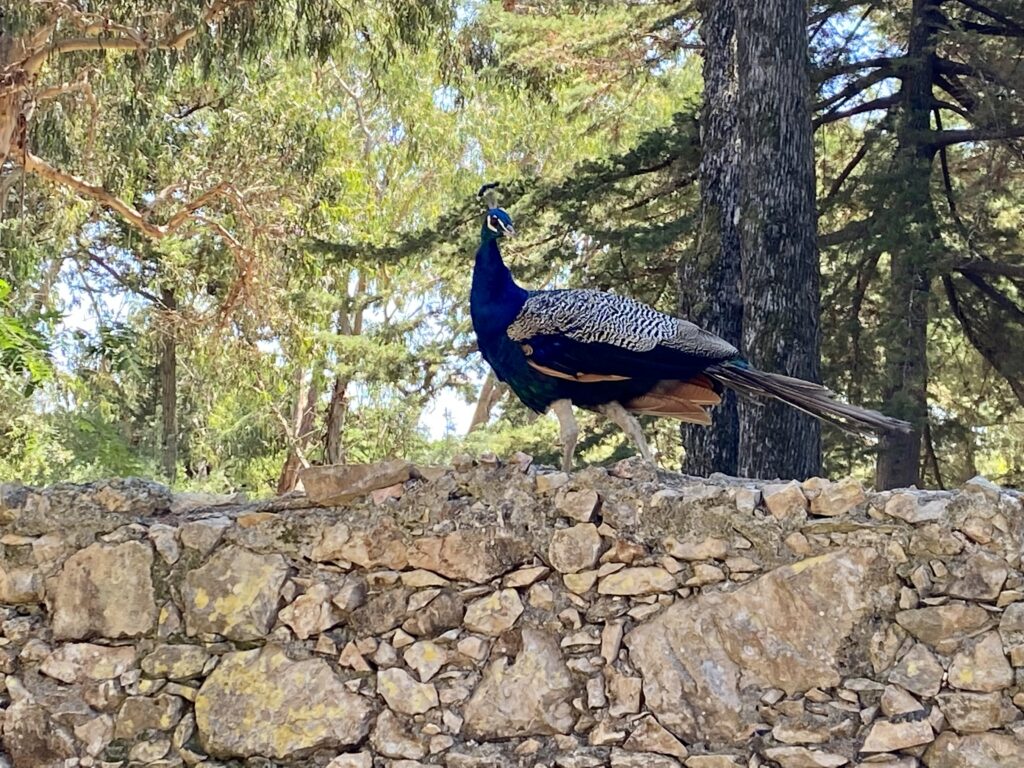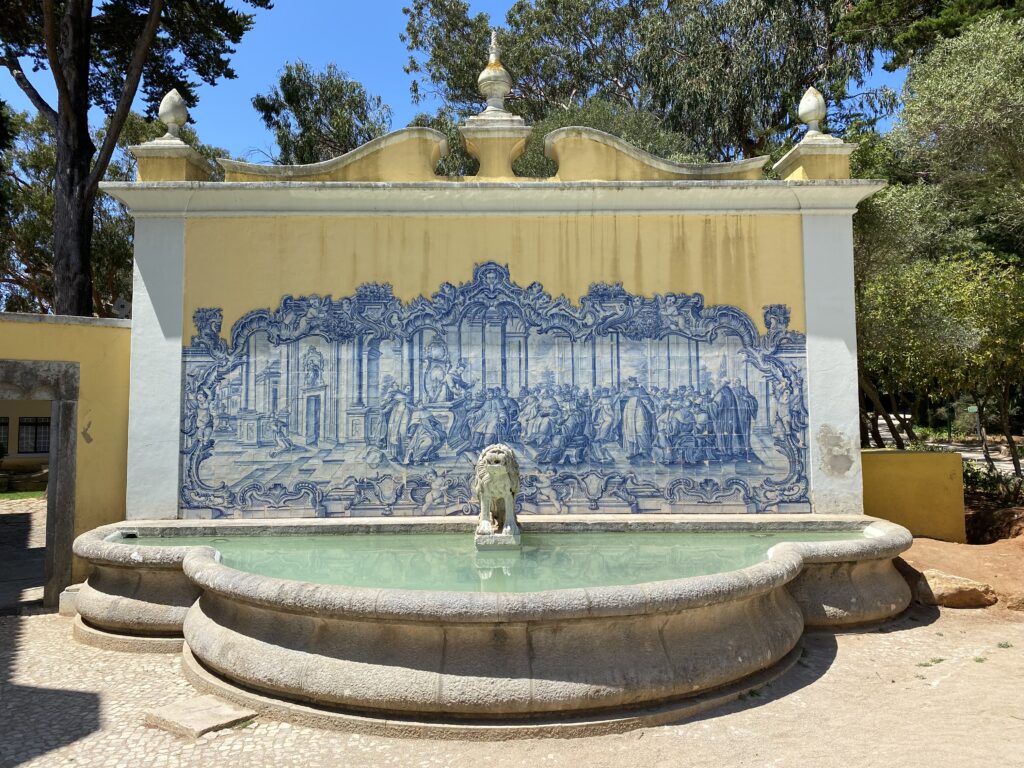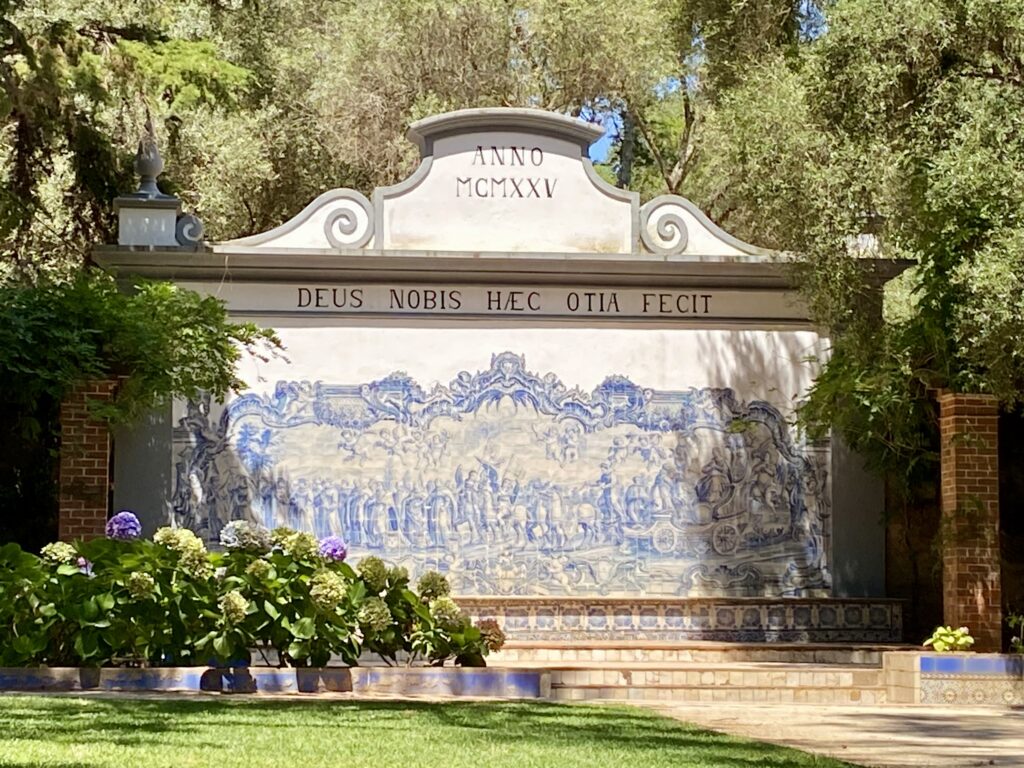Although we didn’t drive that far (Cascais is only about 40 miles from Torres Vedras) we packed a fair bit in – stocking up on supplies at a supermarket in Mafra and then walking the National Palace and Grounds and, finally, I had a look-see around Sintra. Although there is much to see and do in Sintra (it is a very pretty town with an abundance of impressive buildings – the Palaces of Pena and Monserrate, the Castelo dos Mouros, the Quinta da Regaleira, the Convento dos Capuchos, etc) the place was packed with tourists (No surprise there; it was a weekend during the height of summer) and I decided it should be left for an out of season visit.
The next morning we were off in the Van to explore the former fishing village of Cascais. On the way, we stopped off just a few miles down the coast at a local attraction, a sea arch known as the Boca do Inferno, the Hell’s Mouth. I’d read a number of blogs on the internet which described the Boca do Inferno in quite glorious terms – “an amazing arch”, sensational location”, “must see site with amazing vantage points”, “dramatic” – Forget it!! The Portuguese coast is full of such sites and this one is barely worth parking the car for.
Now Cascais; that’s a totally different matter. Yes it is touristy and it is quite expensive but it is a pretty place and well worth visiting. I once described the town as “hollow” and, in hindsight, that is both unfair and incorrect. At the time I was comparing Cascais with Portofino in Italy and it is inappropriate to make such comparisons. Cascais is a fair sized town in its own right (much bigger than Portofino). Moreover it is situated in one of Portugal’s most popular tourist areas (perhaps the most popular tourist spot on the west coast) AND it is just outside of the country’s capital city. Come on, with that in mind it could never be as exclusive as little Portofino.
So what is Cascais like? It is a pleasant mix of new and old. There are still traces of the charming old fishing port with it’s narrow lanes and cobbled streets full of whitewashed and/or tiled cottages but, early in the 20th century the town became the preferred holiday resort of the Portuguese royal family and other nobility and as a result a great many far more imposing buildings were added to the town and these now sit side by side with the old cottages.
As the twentieth century progressed Cascais and the neighbouring almost equally fashionable town of Estoril were joined by a wide tree lined promenade and the combined towns then developed into a playground for the rich and famous with beautiful beaches, lively bars and restaurants, expensive designer shops and boutiques, premier international motor racing (the Estoril motor racing track ran the Portuguese Grand Prix between 1984 and 1996) and, let’s not forget, the glamorous and sophisticated Casino Estoril (the largest casino in Europe) which Ian Fleming visited before writing his 1953 James Bond novel, Casino Royale.
Surprisingly, it was easy finding somewhere to park the Van in Cascais and minutes after leaving the Van we were in the largely pedestrianised old town. Be warned however, this is not the easiest town to navigate. My initial objective was the Praca 5 de Outubro and it wasn’t easy to find. Indeed, we gave up on it for a while and made our way down to the beach for a drink and a spot of lunch.
The old town is pretty. Most of the squares and streets in the old town are paved with patchwork mosaics (calcada portuguesa) and many of the houses are adorned with beautiful patterned tiles and thick growths of vibrant pink Bougainvillea… and dotted throughout the old town are some amazing street art.
The beaches in this area are generally very good and the sandy Praia Da Rainha is amongst the best. It is overlooked by cafe bars and restaurants and it was at one of these we enjoyed our lunch.
After lunch we continued our search for the Praca 5 De Outubro, taking in the blue and white lighthouse and, next to it, the Casa de Santa Maria. Both are now museums although the lighthouse is still operational.
Another place turned into a museum is a former property of Manuel Inacio de Castros Guimares which he gifted to the town in his will. This property, which was built by an eccentric Irish tobacco baron in 1910 has been described both as a mock Gothic Castle and a whimsical Revivalist Palace. It is quite unique. The gardens, together with land previously owned by the Viscount Gandarinha, now form the Marechal Carmona Park – a shaded public park with lush green lawns, flowerbeds and various water features. It is one of the noisiest parks I have ever visited with free roaming peacocks, roosters and ducks seemingly vying with each other to be heard.

